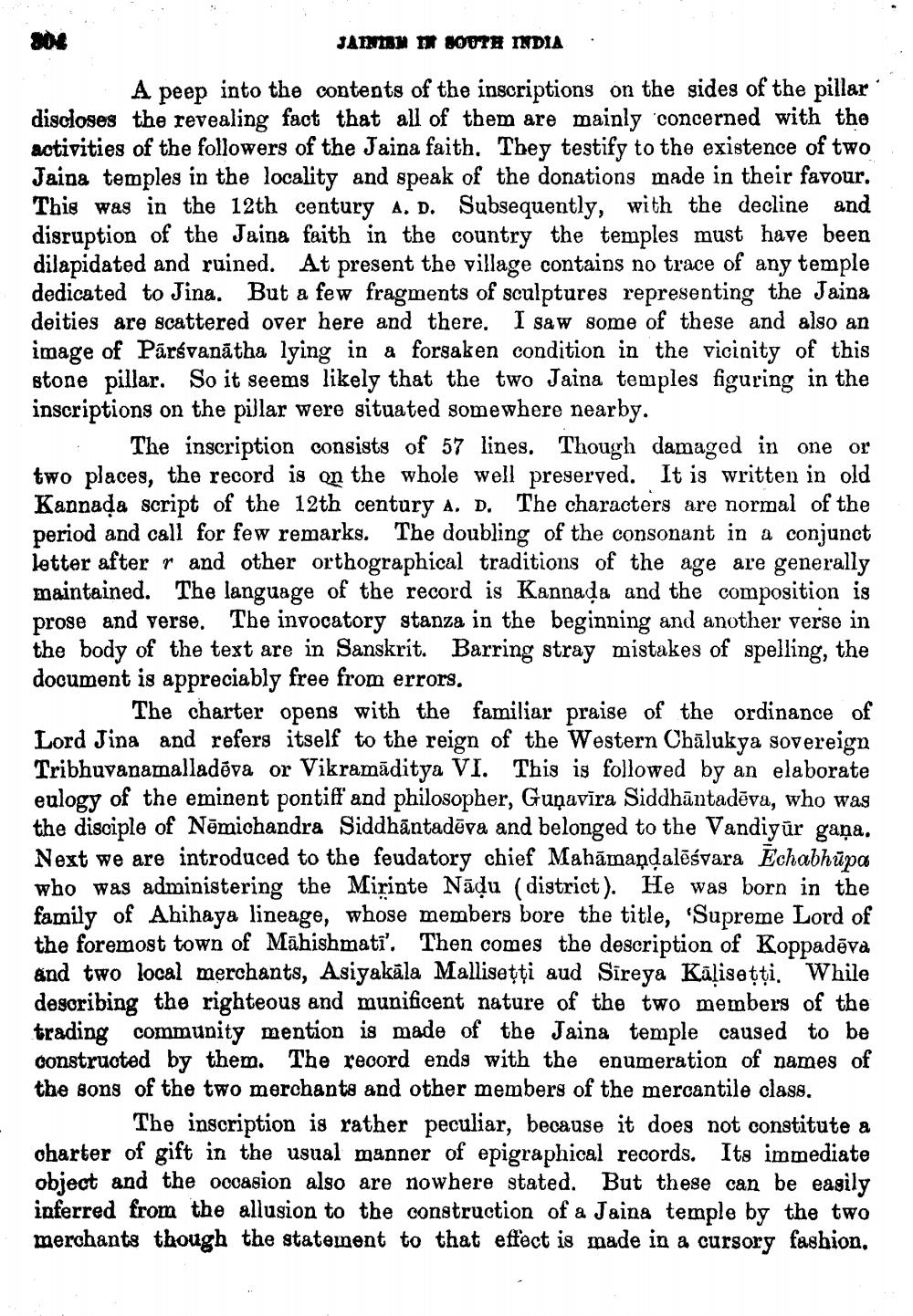________________
20€
JAMNIBM T OUTH INDIA . A peep into the contents of the inscriptions on the sides of the pillar discloses the revealing fact that all of them are mainly concerned with the activities of the followers of the Jaina faith. They testify to the existence of two Jaina temples in the locality and speak of the donations made in their favour. This was in the 12th century A. D. Subsequently, with the decline and disruption of the Jaina faith in the country the temples must have been dilapidated and ruined. At present the village contains no trace of any temple dedicated to Jina. But a few fragments of sculptures representing the Jaina deities are scattered over here and there. I saw some of these and also an image of Pārsvanātha lying in a forsaken condition in the vicinity of this stone pillar. So it seems likely that the two Jaina temples figuring in the inscriptions on the pillar were situated somewhere nearby.
The inscription consists of 57 lines. Though damaged in one or two places, the record is on the whole well preserved. It is written in old Kannada script of the 12th century A. D. The characters are normal of the period and call for few remarks. The doubling of the consonant in a conjunct letter after pr and other orthographical traditions of the age are generally maintained. The language of the record is Kannada and the composition is prose and verse. The invocatory stanza in the beginning and another verse in the body of the text are in Sanskrit. Barring stray mistakes of spelling, the document is appreciably free from errors.
The charter opens with the familiar praise of the ordinance of Lord Jina and refers itself to the reign of the Western Chālukya sovereign Tribhuvanamalladěva or Vikramāditya VI. This is followed by an elaborate eulogy of the eminent pontiff and philosopher, Gunavīra Siddhāntadēva, who was the disciple of Nēmichandra Siddhāntadēva and belonged to the Vandiyūr gana. Next we are introduced to the feudatory chief Mahānandalēśvara Echabhūpo who was administering the Mirinte Nādu (district). He was born in the family of Ahihaya lineage, whose members bore the title, Supreme Lord of the foremost town of Māhishmati. Then comes the description of Koppadēva and two local merchants, Asiyakāla Mallisețţi aud Sireya Kālisetti. While describing the righteous and munificent nature of the two members of the trading community mention is made of the Jaina temple caused to be constructed by them. The record ends with the enumeration of names of the sons of the two merchants and other members of the mercantile class.
The inscription is rather peculiar, because it does not constitute a charter of gift in the usual manner of epigraphical records. Its immediate object and the occasion also are nowhere stated. But these can be easily inferred from the allusion to the construction of a Jaina temple by the two merchants though the statement to that effect is made in a cursory fashion.




